As a teenager in the nineties, my first visit to The National Quilt Museum in Paducah, Kentucky, was during the big quilt show. Since I had never attended the shows before, I was excited to see some of the best quilts from previous years displayed in one space. Although my visits were sporadic until about ten years ago, I have always seized any opportunity to visit this museum.
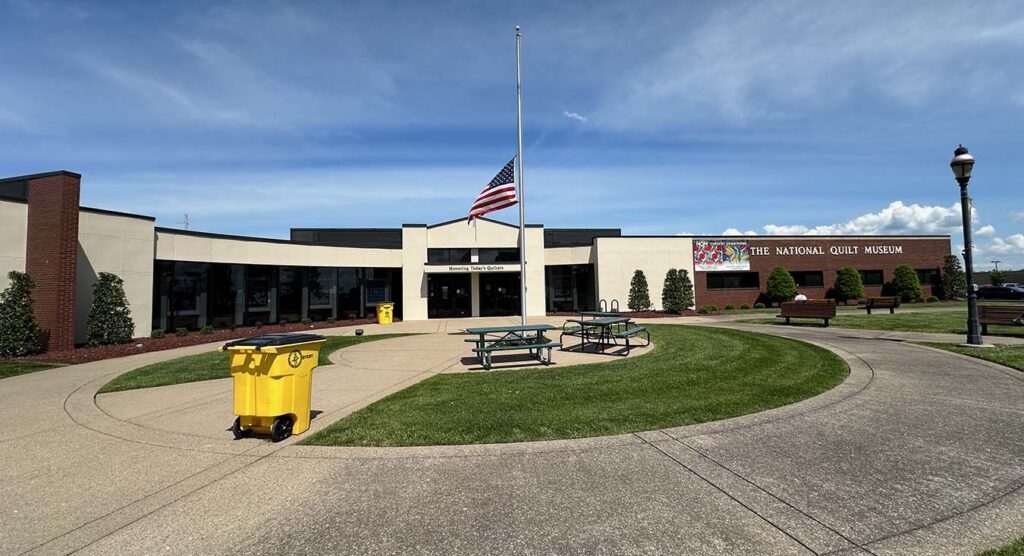
The National Quilt Museum
Where: The National Quilt Museum is in downtown Paducah, Kentucky, near the riverfront. There are several access points through the flood wall to take in the river view.
Parking: The museum is conveniently located with a small parking lot directly adjacent and a larger public parking lot located behind the building.
Website: The National Quilt Museum website provides up-to-date information to help you plan your visit, along with a free Block of the Month program, upcoming challenge opportunities, and more.
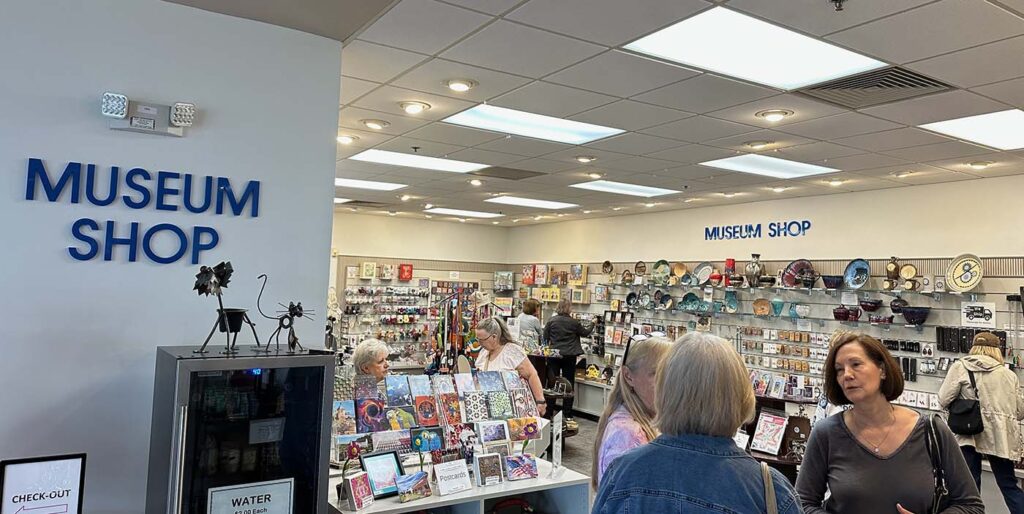
From the front doors of the museum, you enter a lobby area where you can purchase tickets, visit the museum shop, and access the hallway that leads to the classroom space.
The Center Gallery
You enter the center gallery space of the museum first, and this area generally holds selections from the permanent collection. This diverse collection of contemporary quilts includes pieces made with traditional, art, and modern techniques.

The museum configures the display walls to work in conjunction with the current displays, providing smaller areas to feature related quilts within the context of the overall exhibit.
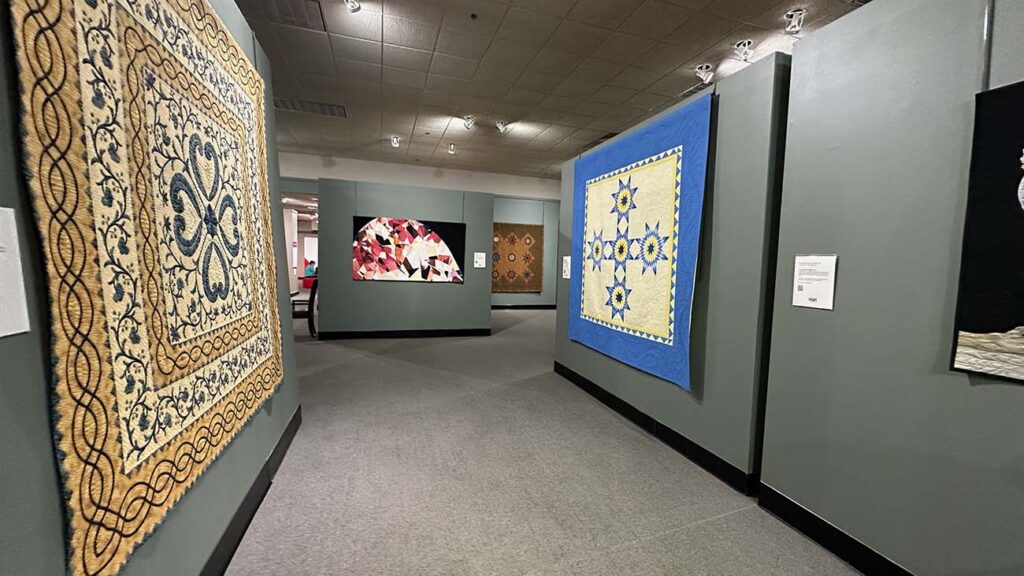
I love how this space uses color to tie together four drastically different quilt styles.
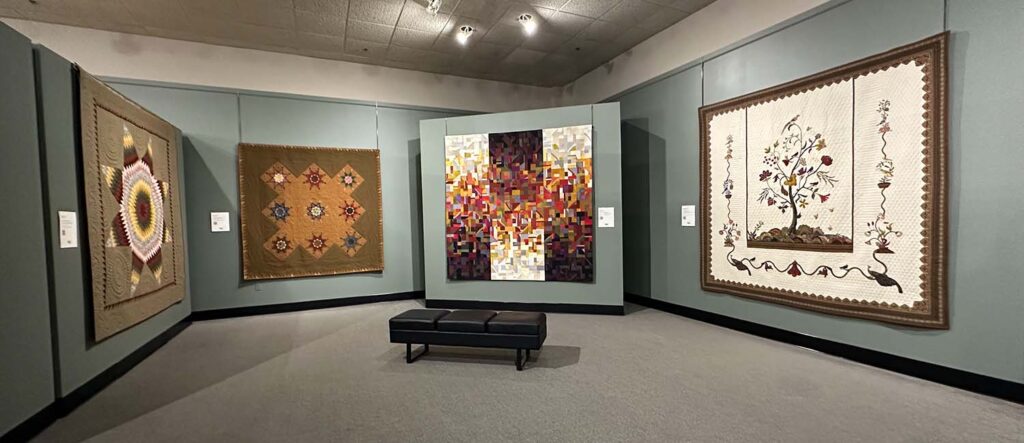
Infused Plaid
One of my quilts, Infused Plaid, was the first Modern Quilt added to the museum’s permanent collection. With so many amazing quilts to rotate through the galleries, I’m always thrilled to see it out on display. This time, Infused Plaid was right next to two Victoria Findlay Wolfe quilts!
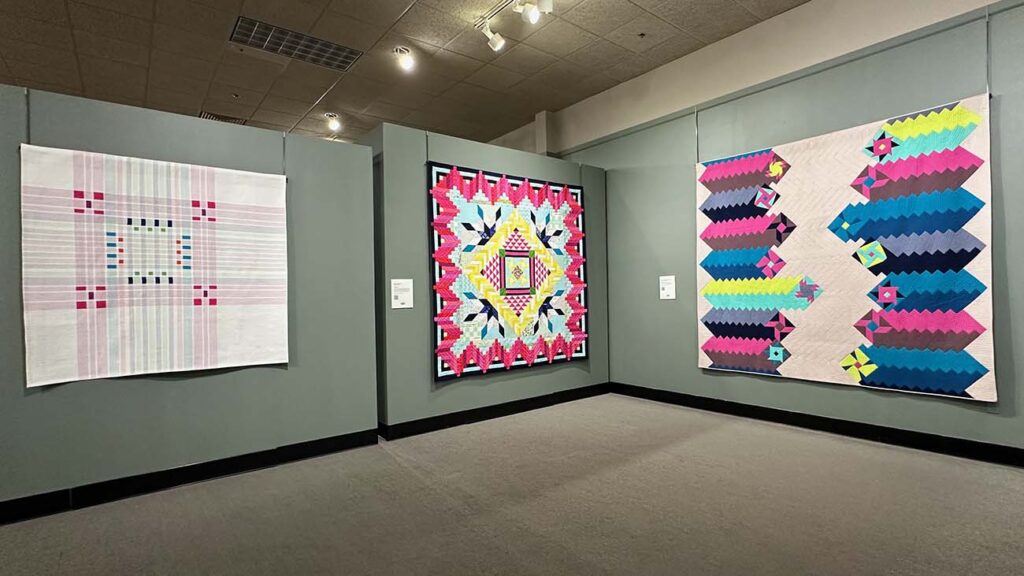
Oh Wow! Miniature Gallery
In a front corner of the central gallery is the gallery of miniature quilts. These pieces represent all quilting styles in their smallest forms. During this visit, all three of my mini quilts in the museum’s permanent collection were on display.
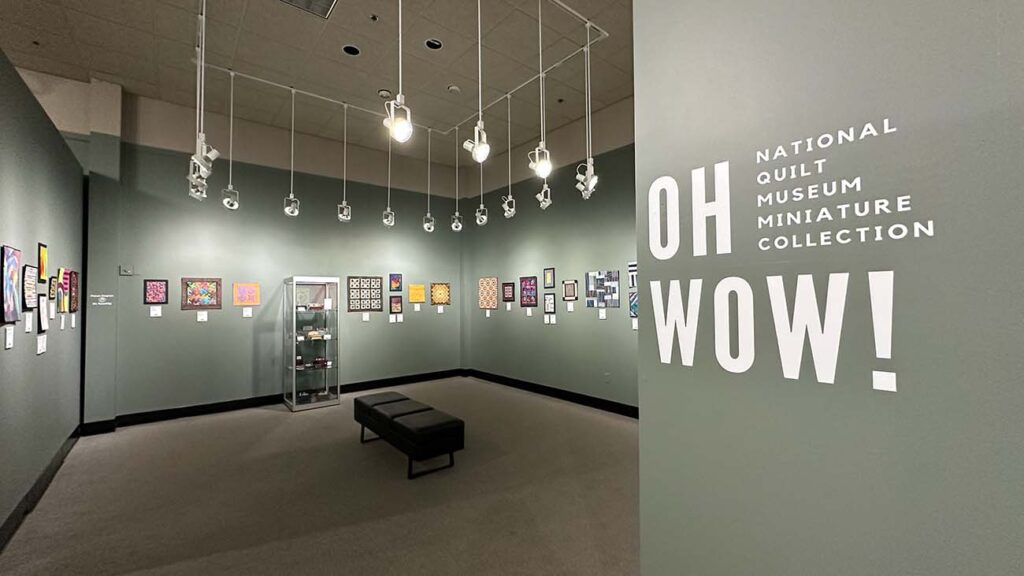
Converging Curves
Converging Curves uses all solid fabrics to create a color-blocked convergence of curves and stripes accented with decorative hand stitches.
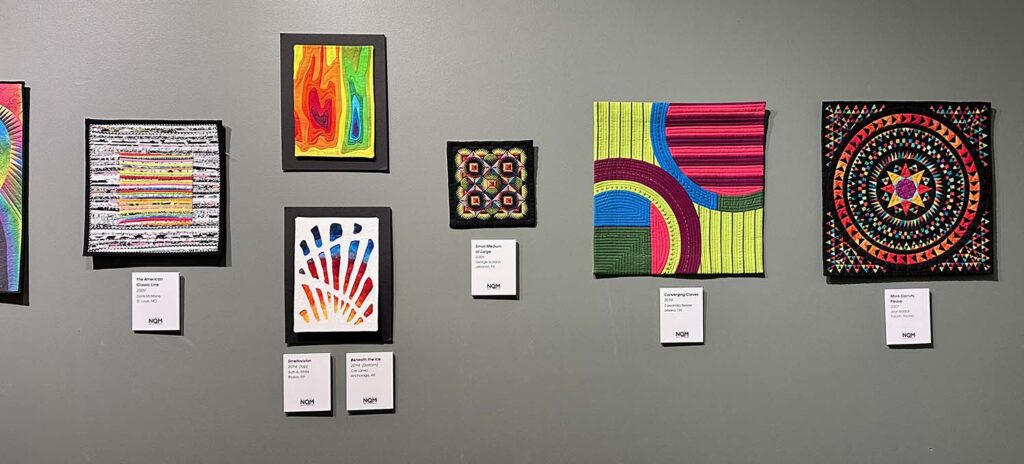
Synthesized Slivers
As one of my few quilts using muted colors, Synthesized Slivers focuses heavily on visual and physical texture to create a composition with small improvisational blocks featuring 1/8″ pieced slivers.
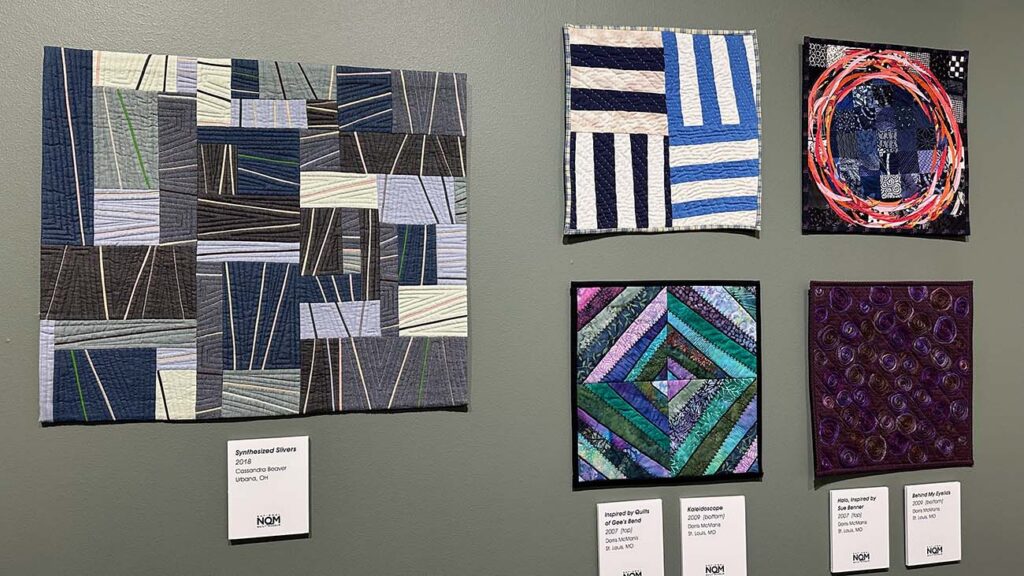
Violet Calm
Violet Calm was the first quilt I made, highlighting the use of colorful quilting thread as a key design element. This quilt was the starting point for The Whole Is Greater Than The Sum of Its Parts and all of my plaid quilts that came after it.
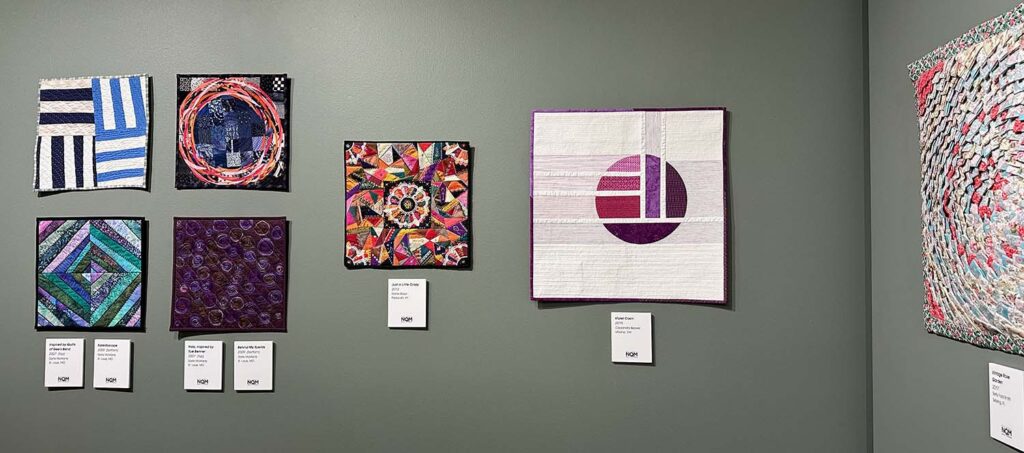
In 2021, I contributed a block of the month pattern to the museum featuring a design inspired by Violet Calm.
Special Exhibits
Off the central gallery are two extensive side galleries, each with a special exhibit. I enjoyed how these significantly different exhibits complemented each other, with one focusing on the artist’s stylistic shifts throughout her career, while the other exhibit features a cohesive body of work created to work together, with every piece intended to coordinate with all the other quilts.
A Life in Color
Caryl Bryer Fallert-Gentry shares her extensive collection of the work she has created throughout her life. I appreciate that she included her very early work, all the way up through pieces she is currently producing.
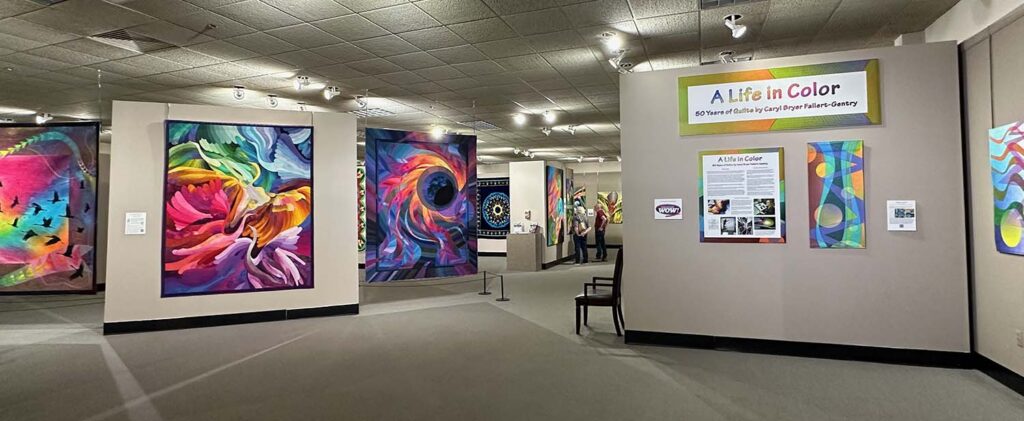
I have always admired the way Caryl pushes boundaries, both for herself and the quilting world as a whole. When you see this much work from a single artist in one space, you have the rare opportunity to see how techniques and design aesthetics evolve.
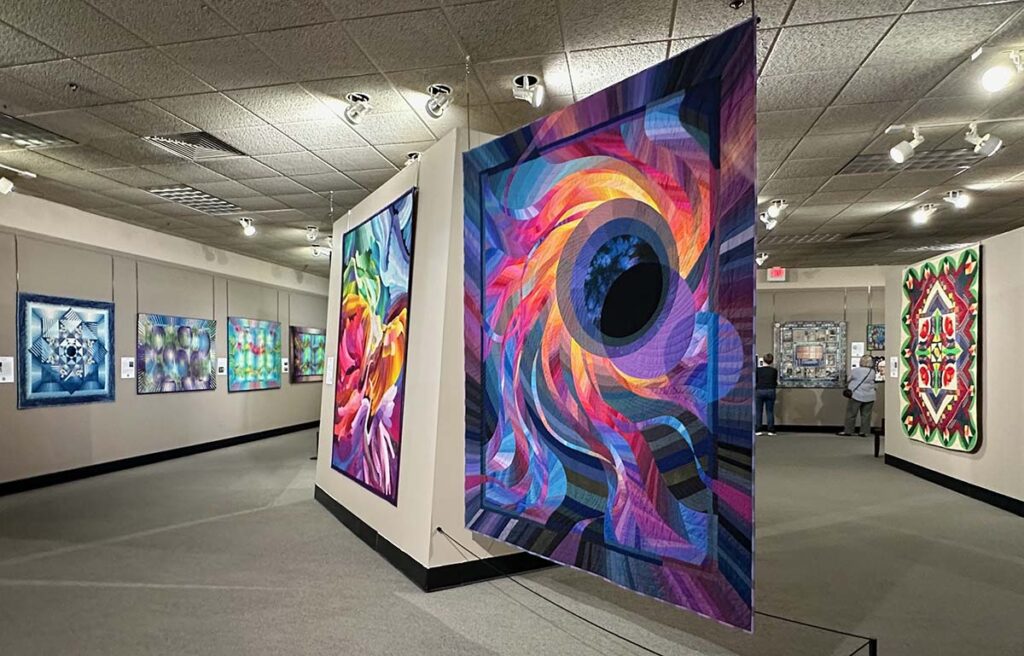
Corona #2: Solar Eclipse
One of the quilts that pushed boundaries the most for its time was Corona #2. At the time Caryl made this quilt, the design was cutting edge, and the hand-dyed fabrics were a bold and dynamic design element.
Perhaps Corona 2 is best known as the first machine-quilted quilt to win best of show at the American Quilter’s Society (AQS) show in Paducah.
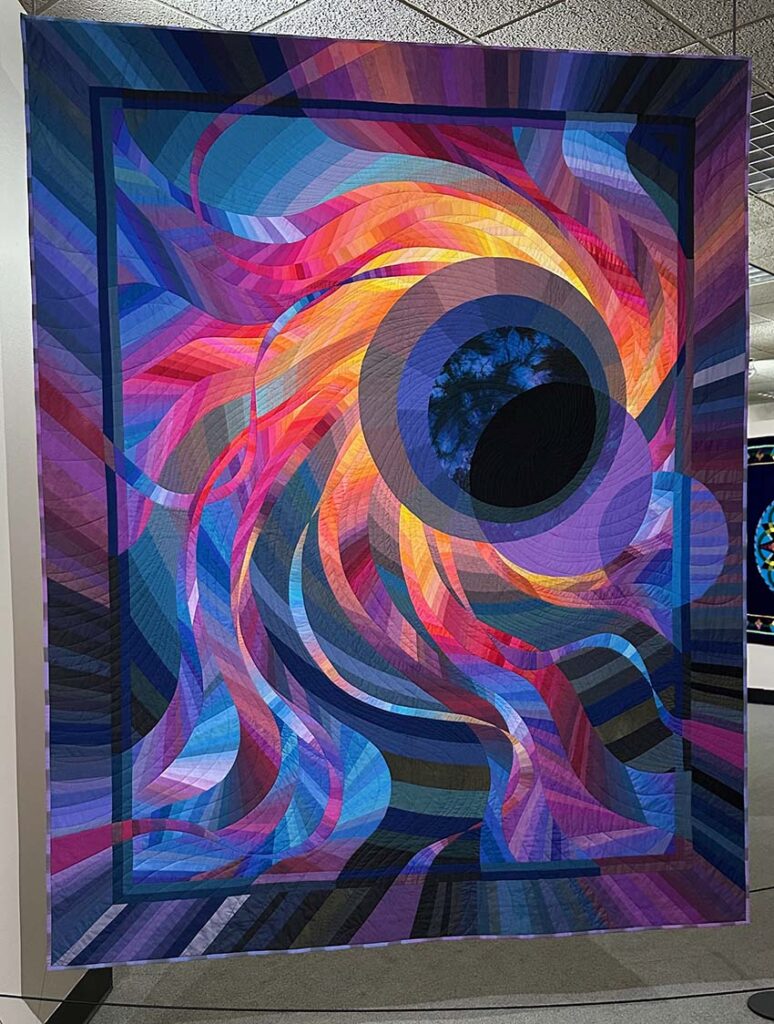
I love that the back of this quilt is almost as exciting as the front.
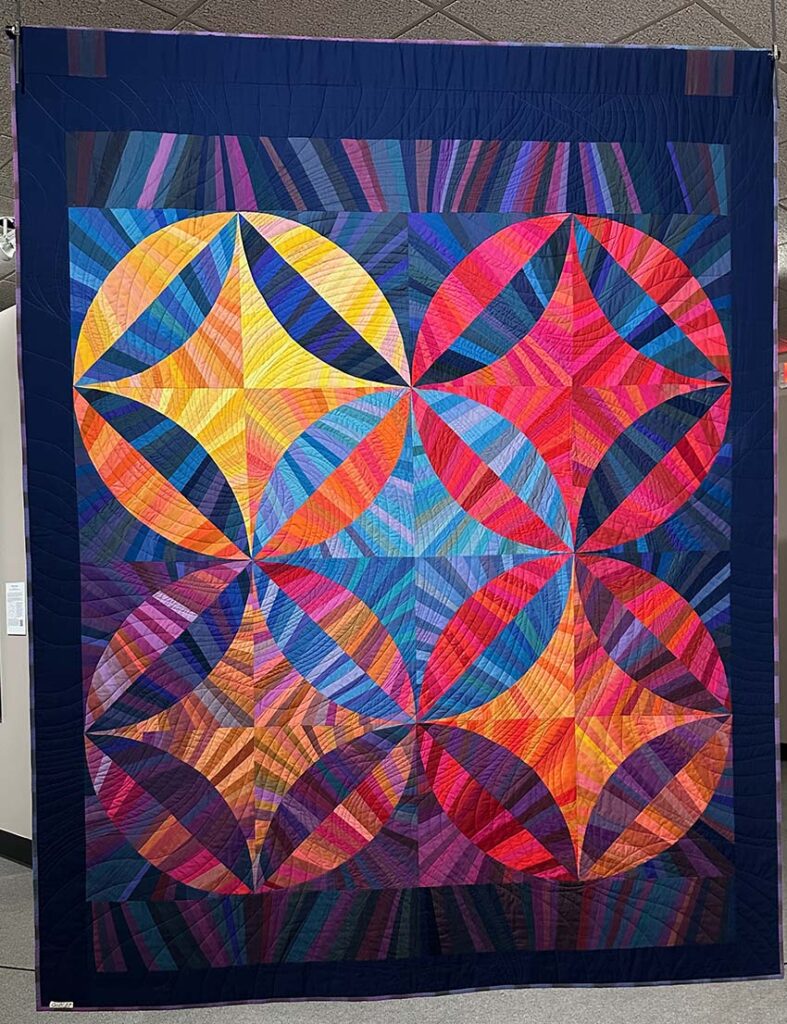
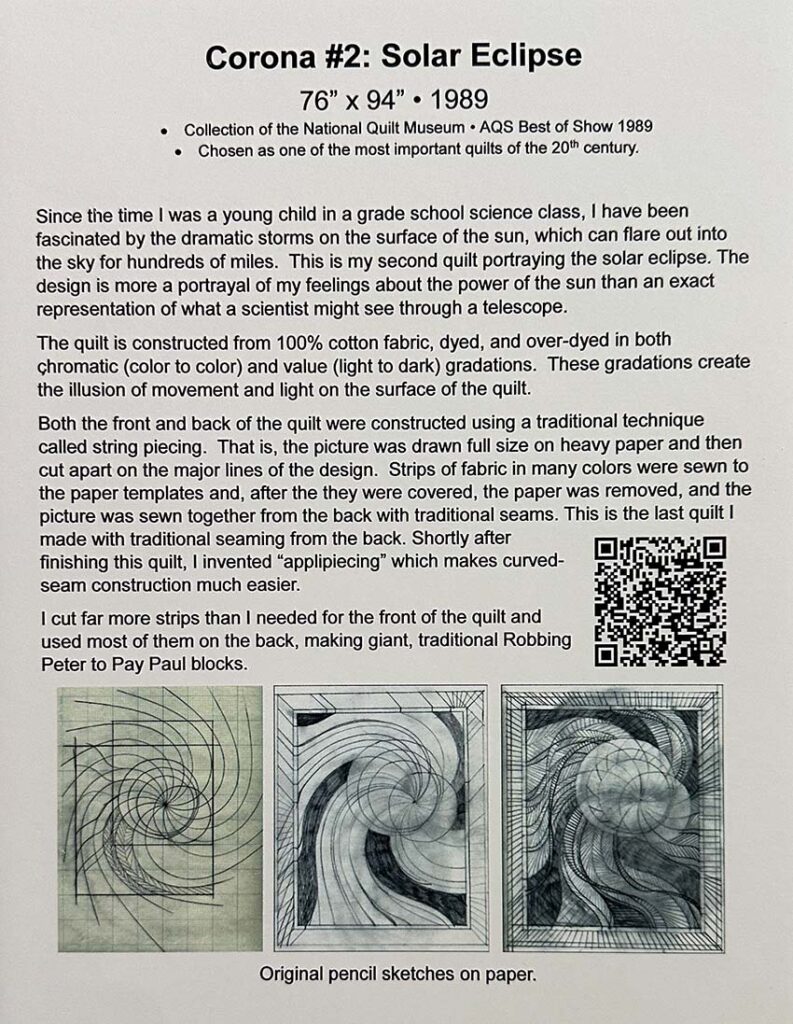
Red Poppies
Red Poppies is the first art quilt Caryl made, and it’s fascinating to see how quickly her work evolved in the 1980s.
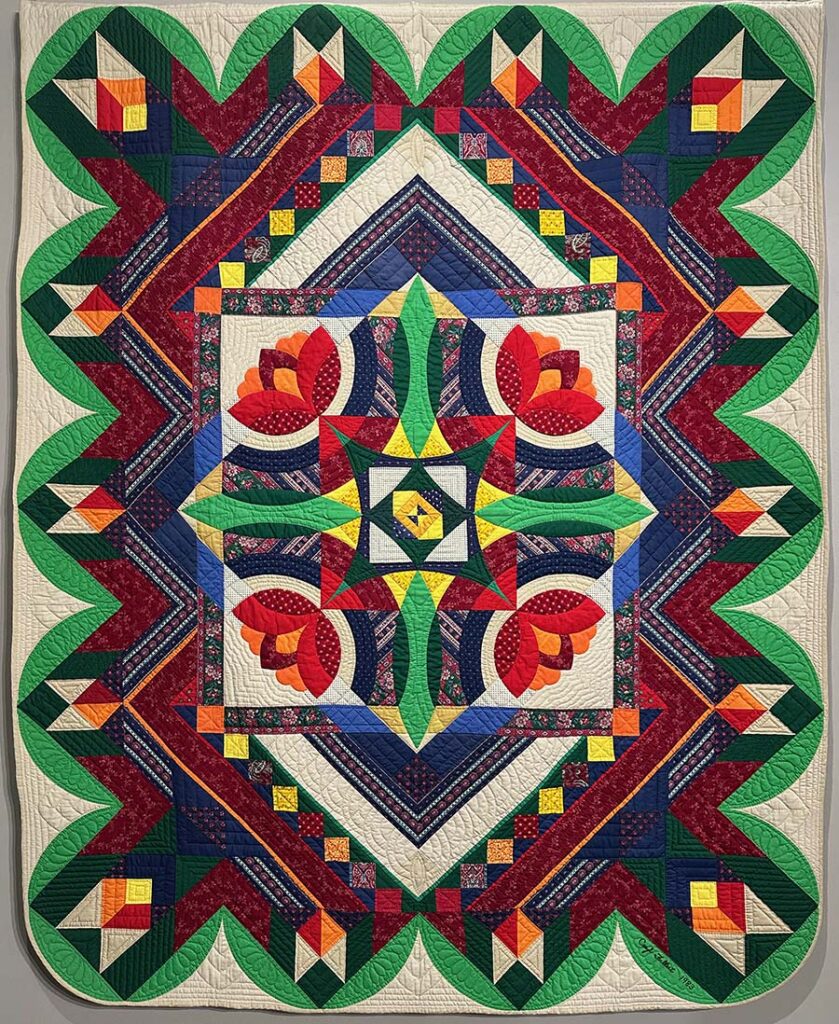
Quilting cotton didn’t have a vast range of choices in the early 80s, so many of the prints in this quilt are recognizable when you get up close. The tiny hand quilting is also extremely impressive.
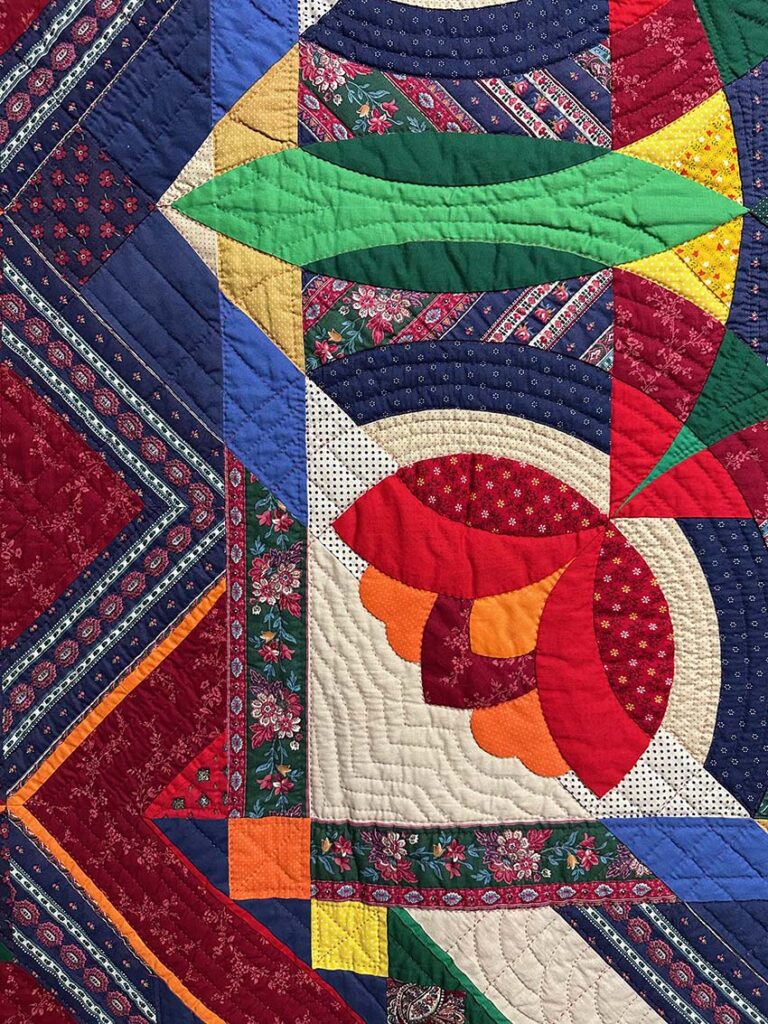
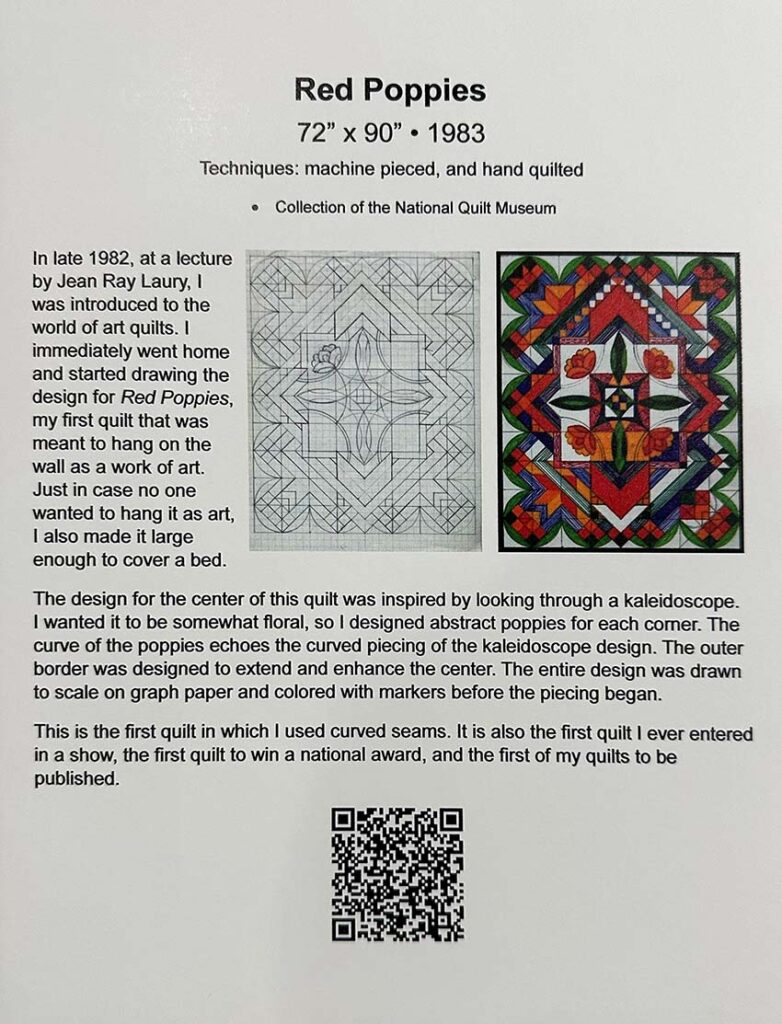
Newer Works
Caryl is still making quilts, with many of her current pieces focused on digital design and printing.
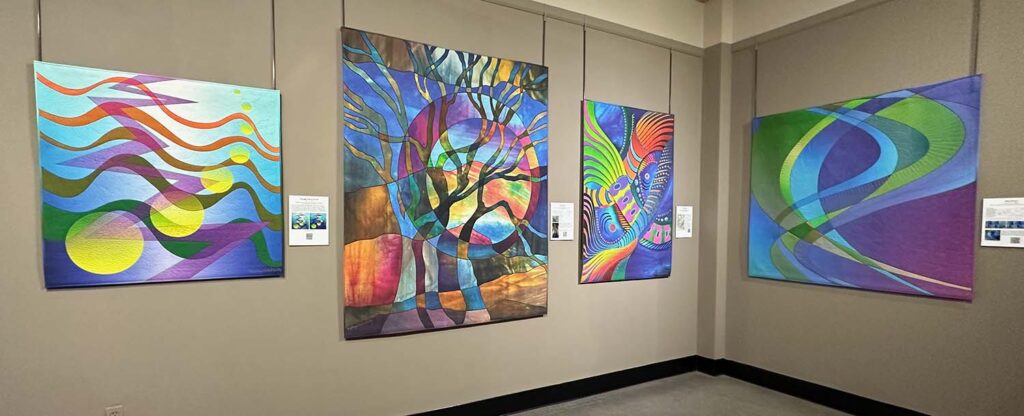
Option Expedition
Victoria Findlay Wolfe created this composition-focused series, utilizing a cohesive color palette of solid fabrics to draw attention to the use of shape and space in each design.
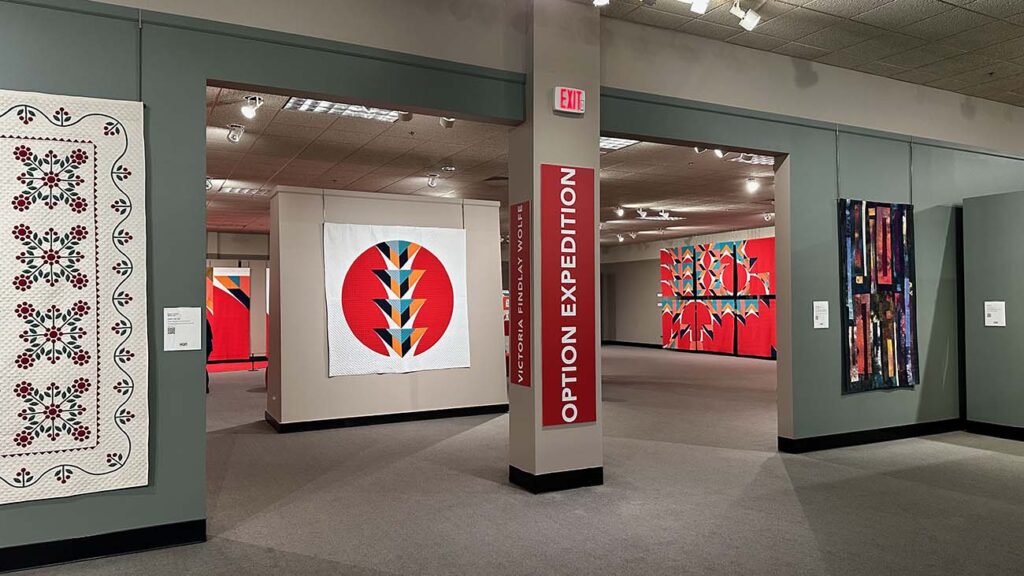
Individual Quilts
Every quilt in this exhibit stands on its own, but also relates to the other quilts in the exhibit. These are large quilts with BIG blocks that make the designs pop even from across the room.
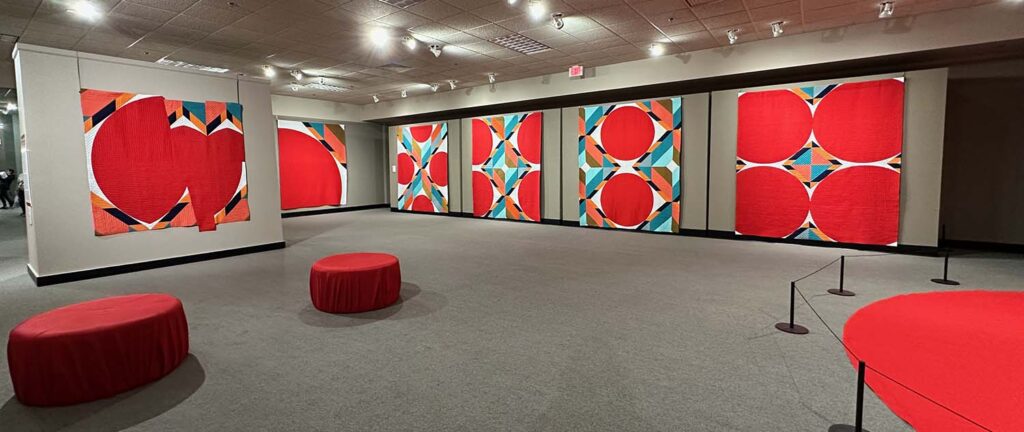
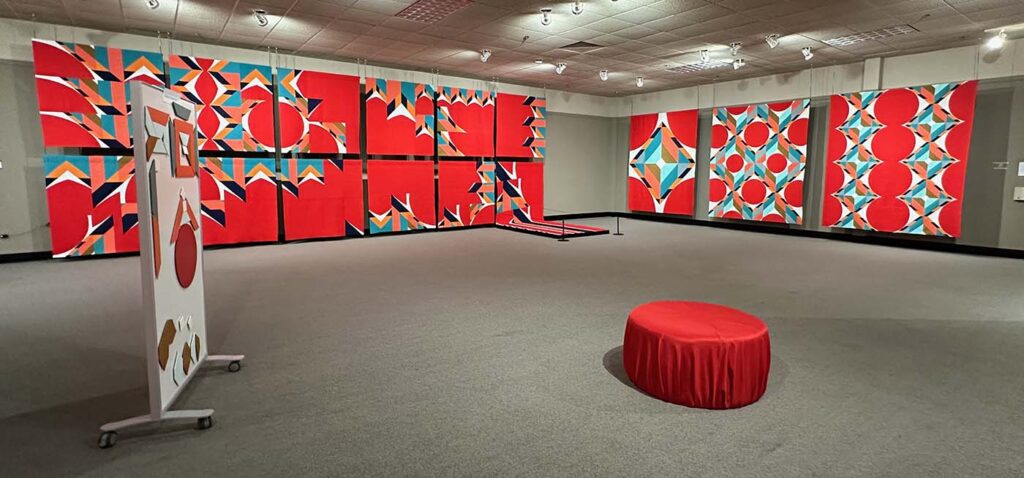
Installation Pieces
My favorite pieces in this exhibit are the installation pieces that work in conjunction with each other and activate the space beyond the gallery walls.
This piece creates an implied circle through four quilt segments, drawing the floor into the composition.
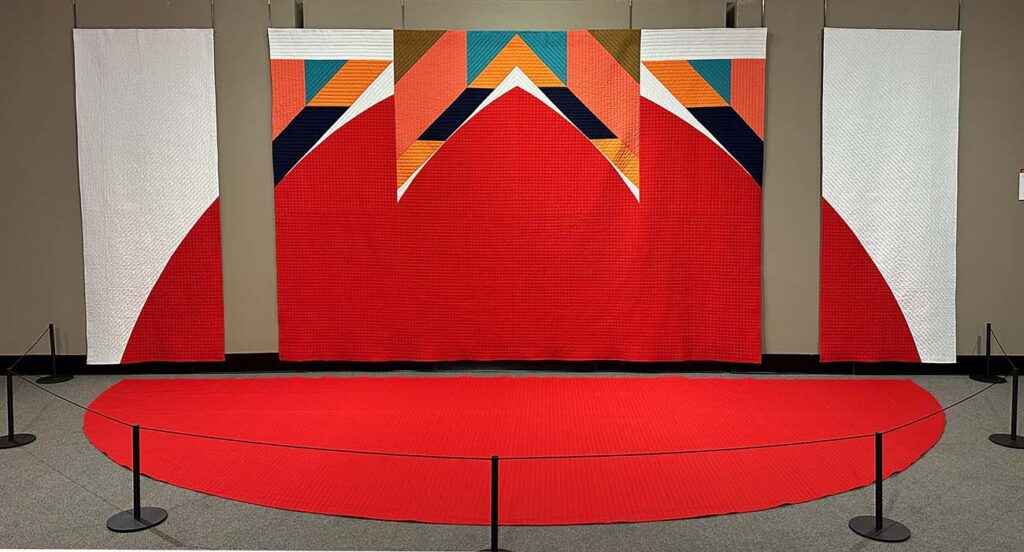
The dozen pieces comprising this wall (and floor) installation are modular units that relate to each other so seamlessly that they can be reconfigured into a new composition in each space.
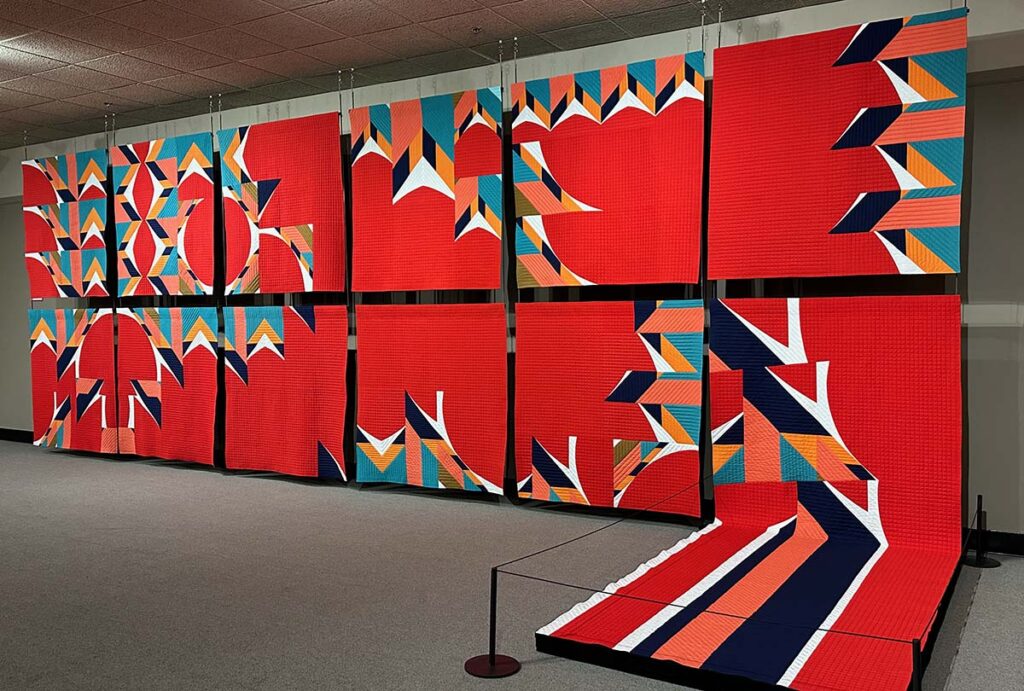
I was especially excited to see Option Expedition at The National Quilt Museum because I had seen it the previous summer at The International Quilt Museum, and couldn’t wait to see how it worked in a different exhibit space.
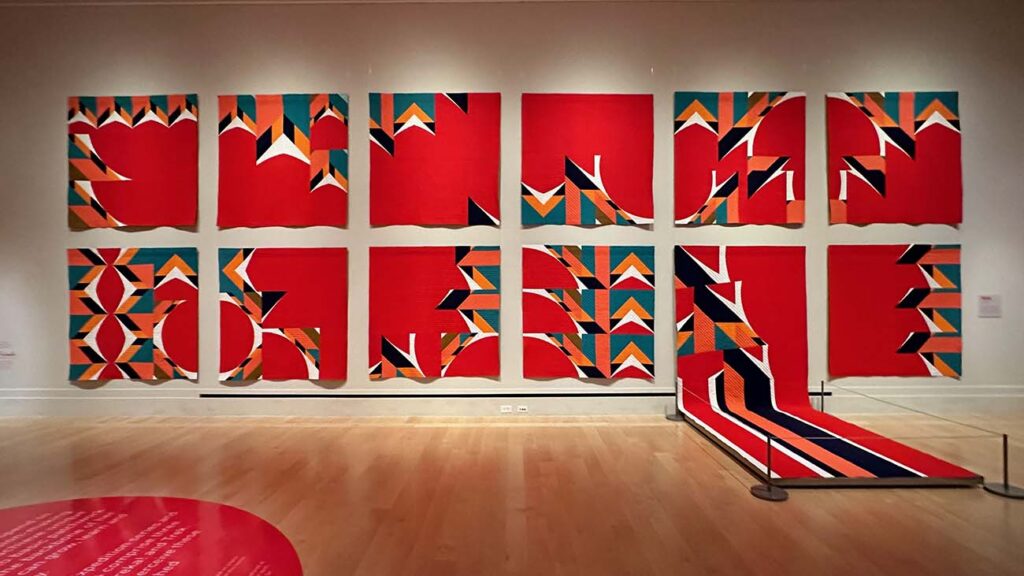
Here you can see the same modular installation at the International Quilt Museum. Do you see how the layout changes? Do you prefer one layout over the other?

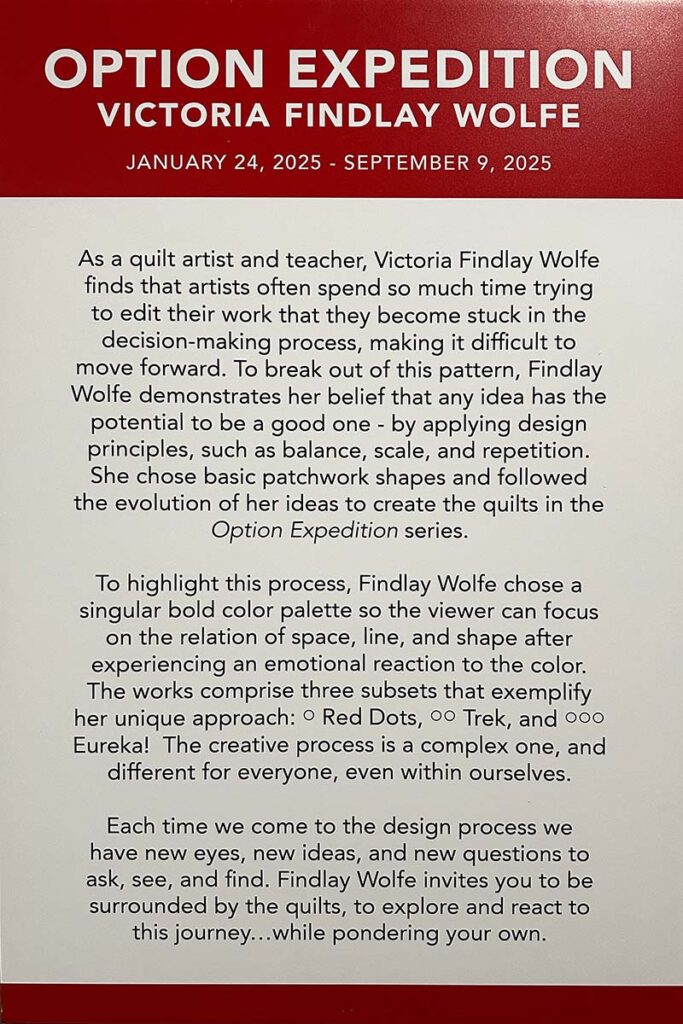
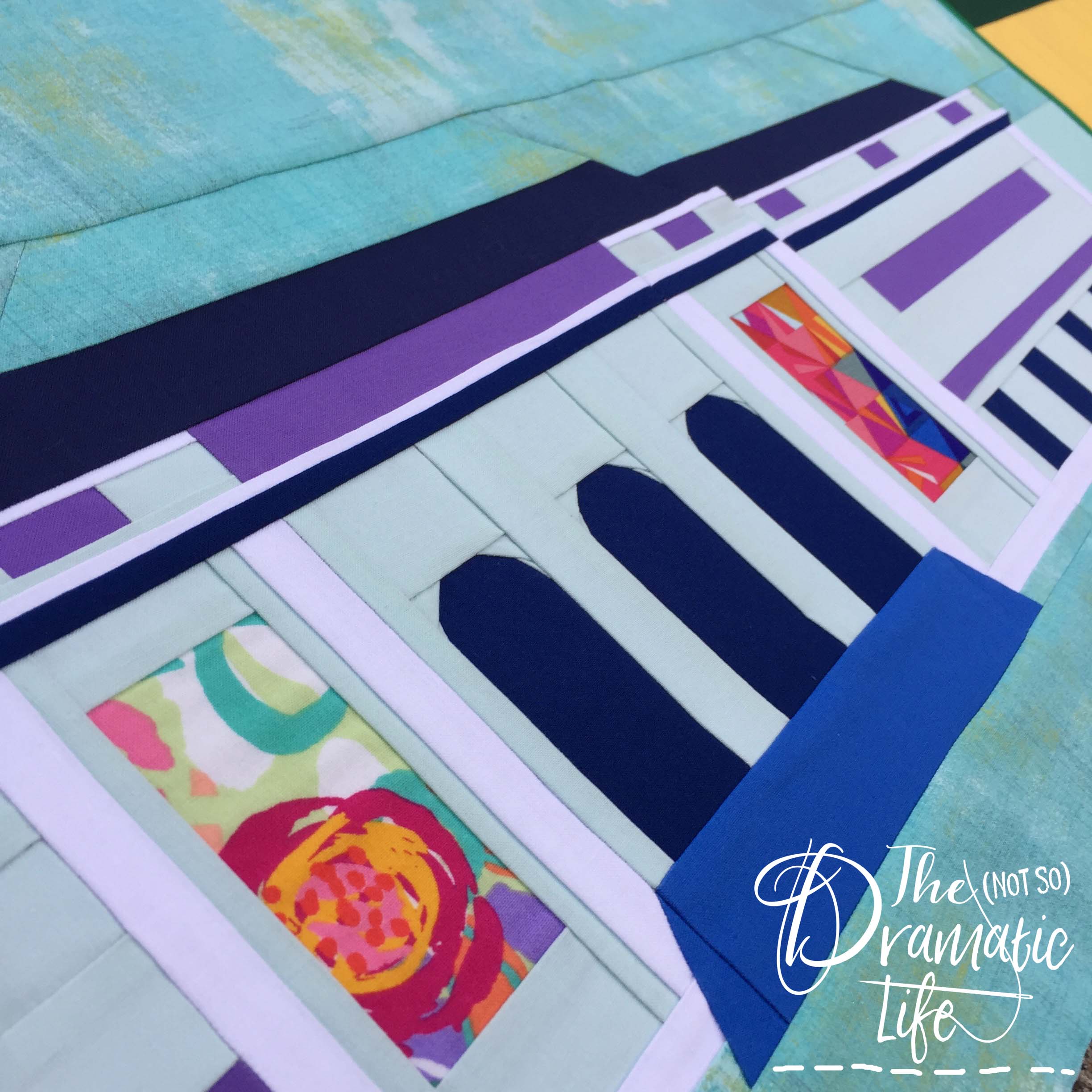
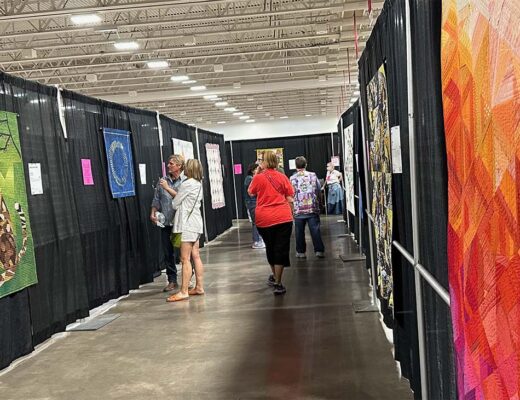
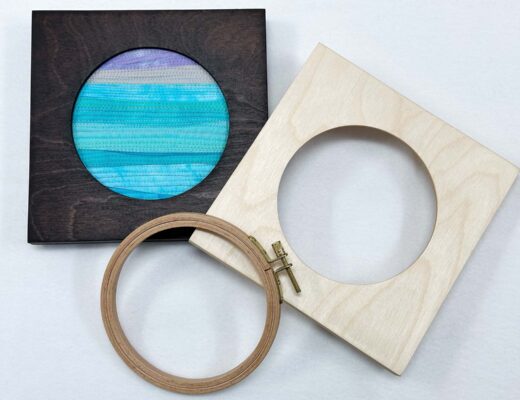


2 Comments
Kim
July 12, 2025 at 2:13 pmWhat a fun time at the Museum! I was there and knew your work immediately!
Pat Reid
July 15, 2025 at 2:41 amWhat a fabulous museum. Might have to put it on my bucket list for my next US visit. I just love your posts, they are so full of interesting ideas and information. Thank you.